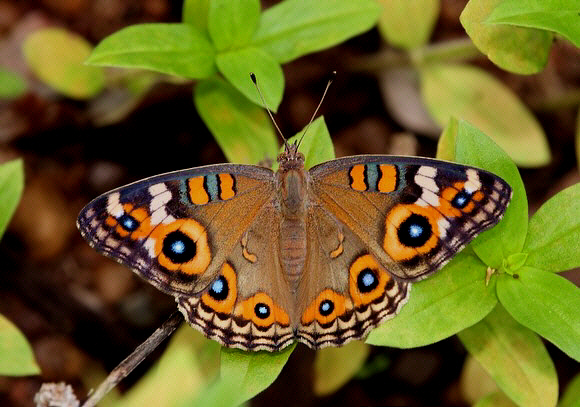
Introduction
The genus Junonia comprises of 33 species found variously in North and South America, Africa, the Oriental region, Indonesia, New Guinea, Australia and the islands of the South Pacific. There are 3 species in Australia: hedonia, villida and orithya. The various members of the genus differ markedly in colour but have several characteristics in common, including prominent maculae in the discal cell of the forewing, and circular ocelli on the hindwings. In several species including villida and orithya there are also prominent ocelli on the forewings. All species have cryptic marbled undersides which resemble dry dead leaves.
Junonia villida occurs commonly throughout Australia and in Java, Bali, West Irian, New Guinea, Samoa, Fiji, the New Hebrides and the Cook Islands.
Habitats
This species inhabits disturbed ground including roadsides, fields, farmland, riverbanks, gardens and wasteland at elevations between sea level and about 1000m.
Lifecycle
The green barrel-shaped eggs are laid singly on leaves of the foodplant. When fully grown the larva is either black or brown, peppered with tiny white dots, and adorned with short branched spikes. It is polyphagous, feeding for example on Hygrophila (Acanthaceae), Centaureum (Gentianaceae), Portulaca (Portulacaceae), Plantago (Plantaginaceae), Evolvulus (Convolvulaceae), Scaevola (Goodeniaceae), Scabiosa (Dipsacaceae), Verbena (Verbenaceae) and Epaltes (Asteraceae). The pupa is earthy brown mottled with black and grey. It is formed on the foodplant or a nearby plant, suspended by the cremaster from a stem or leaf.
Adult behaviour
Both sexes are strongly attracted to a wide variety of flowers and are often prolific in disturbed flowery areas. They commonly bask on the ground or on boulders or fallen tree trunks.
